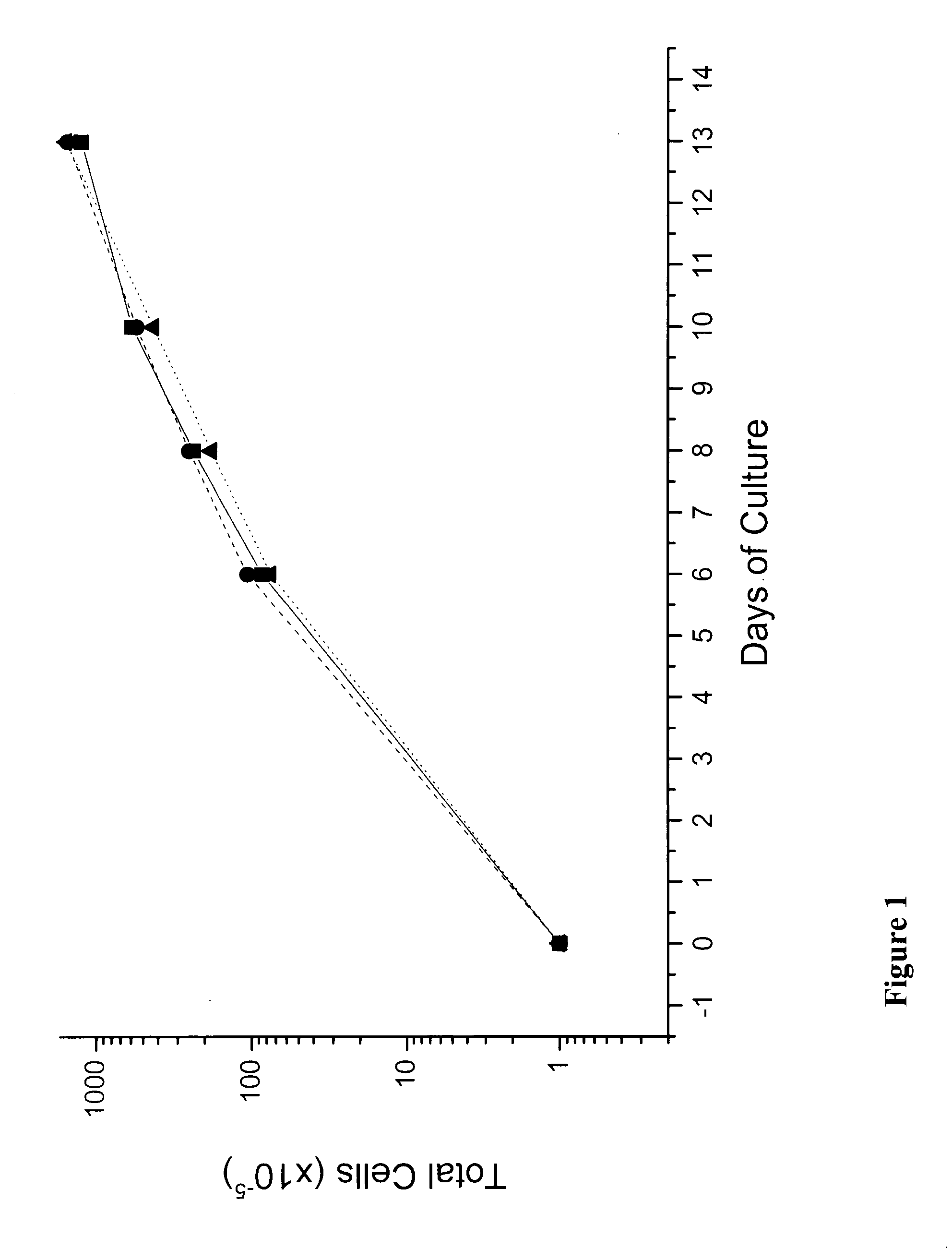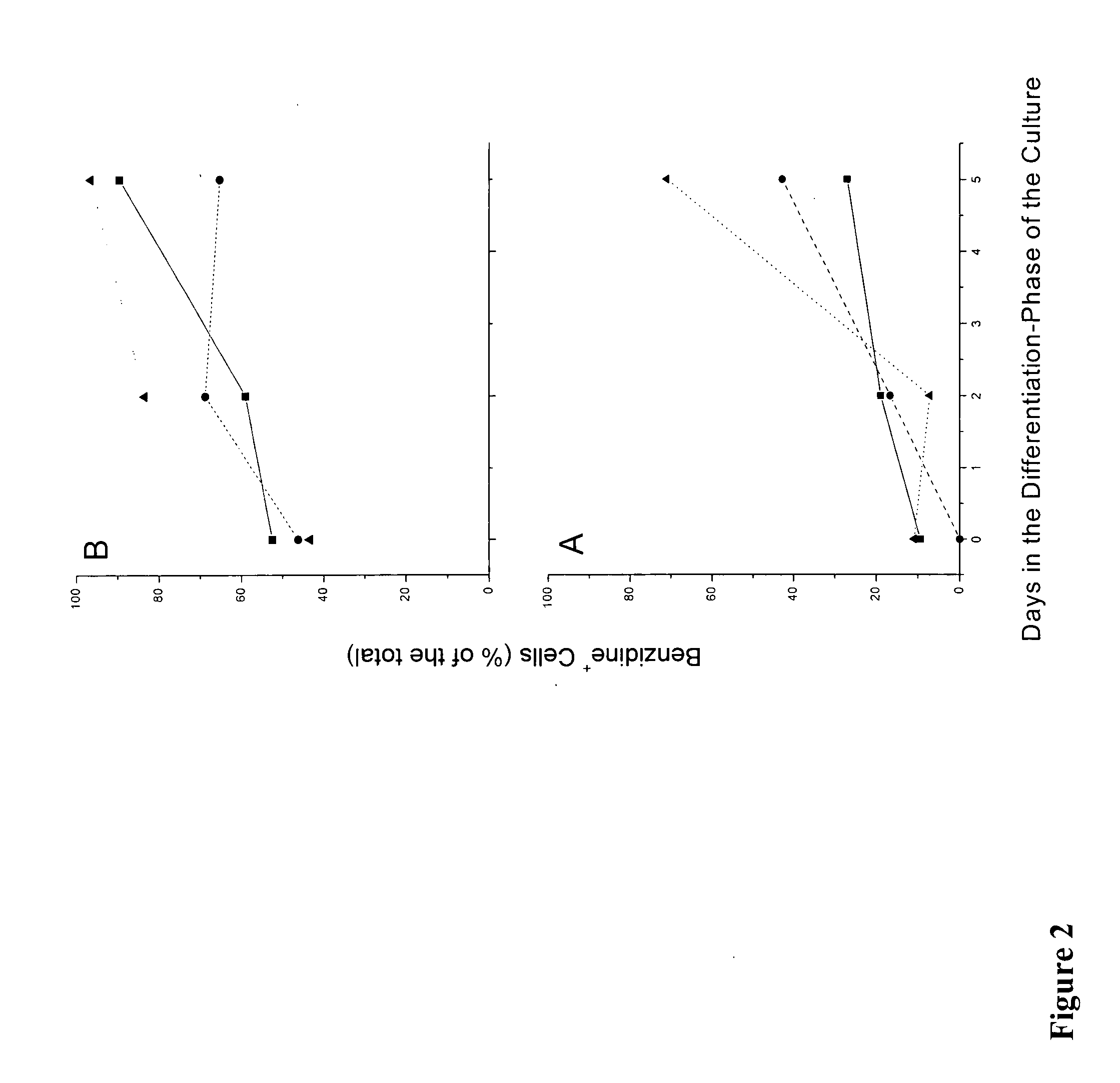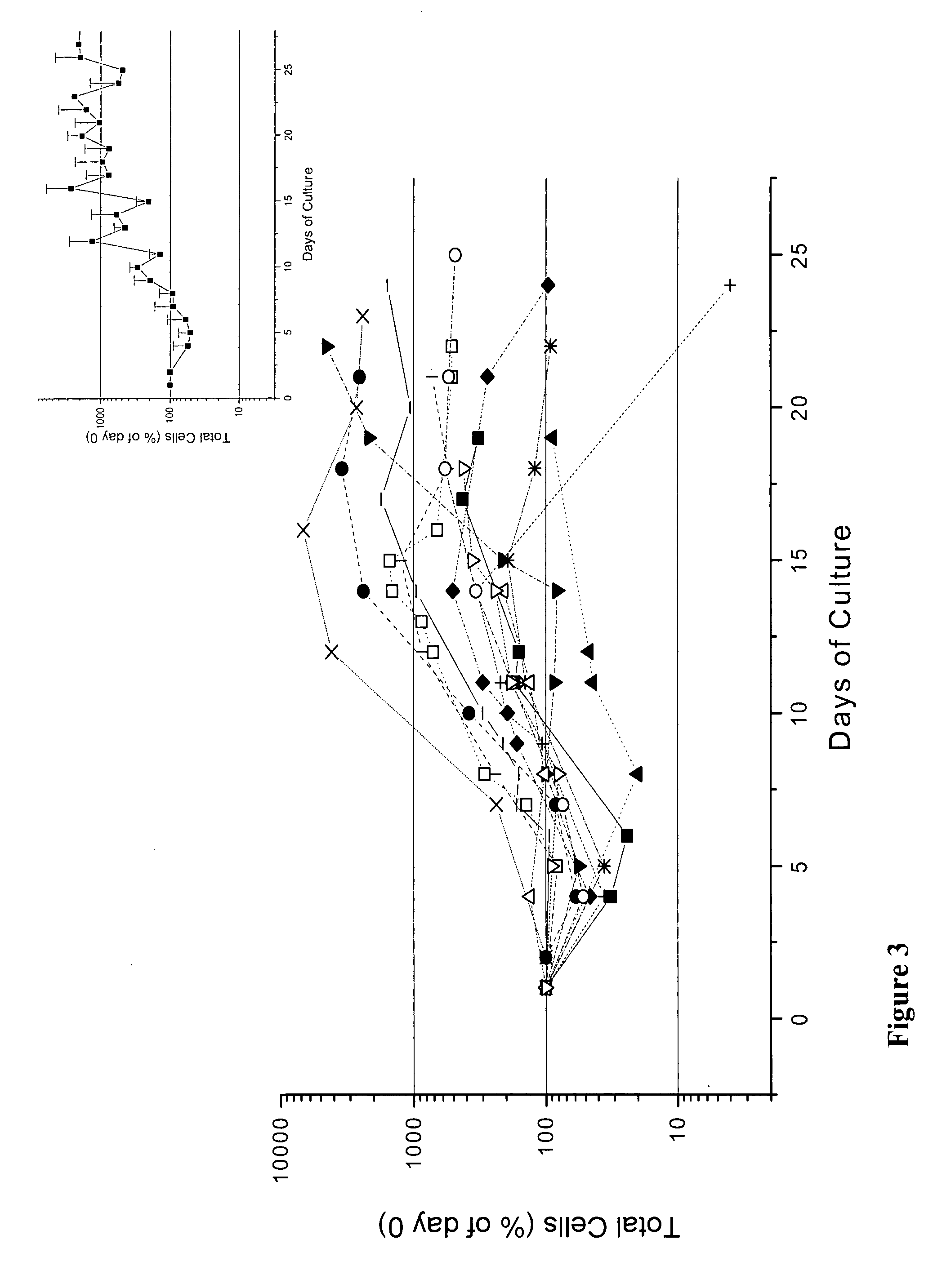In vitro mass production of human erythroid cells from the blood of normal donors and thalassemic patients
a technology of human erythroid cells and blood donors, which is applied in the field of new two-phase culture methods, can solve the problems of not being ethically appropriate to harvest marrow or blood from patients in large amounts, not being able to obtain specimens with a number of cells, and amplification obtained with such a technique is very modest, so as to improve the proliferation rate of erythroid cells, inhibit the production of growth factors, and improve the effect of amplification efficiency
- Summary
- Abstract
- Description
- Claims
- Application Information
AI Technical Summary
Benefits of technology
Problems solved by technology
Method used
Image
Examples
Embodiment Construction
[0020] Human Subjects
[0021] Normal blood buffy coats were obtained from the Italian Red Cross Blood Bank in Rome. Blood from homozygote .beta..degree.-thalassemic patients was collected before its routine transfusion at the Center for Studies on Thalassemia, University of Cagliari, and shipped via overnight delivery to Rome for further analysis. In both cases, collection of human samples was done according to the guidelines established by the local ethical committee for human subject studies.
[0022] Cell Purification
[0023] Mononuclear cells were separated by centrifugation at 400 g.times.30' over Ficoll-Hypaque (Amersham-Pharmacia Biotec, Uppsala, Sweden). Light-density cells were collected, washed with Hank's basal salt solution supplemented with 1% (w / v) bovine serum albumin, and either cultured directly or cryopreserved in 10% dimethyl sulfoxide (Sigma, St. Louis, Mo.). Frozen cadaveric marrow cells obtained from Northwest Tissue Center, Puget Sound Blood Bank (Seattle, Wash.) wer...
PUM
 Login to View More
Login to View More Abstract
Description
Claims
Application Information
 Login to View More
Login to View More - R&D
- Intellectual Property
- Life Sciences
- Materials
- Tech Scout
- Unparalleled Data Quality
- Higher Quality Content
- 60% Fewer Hallucinations
Browse by: Latest US Patents, China's latest patents, Technical Efficacy Thesaurus, Application Domain, Technology Topic, Popular Technical Reports.
© 2025 PatSnap. All rights reserved.Legal|Privacy policy|Modern Slavery Act Transparency Statement|Sitemap|About US| Contact US: help@patsnap.com



